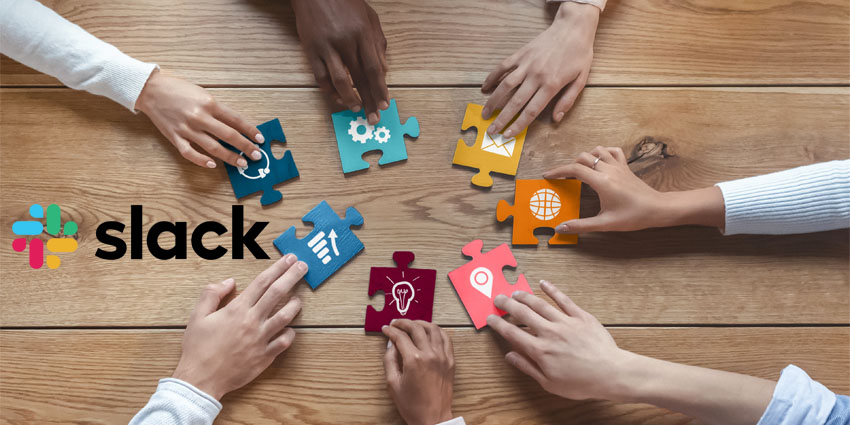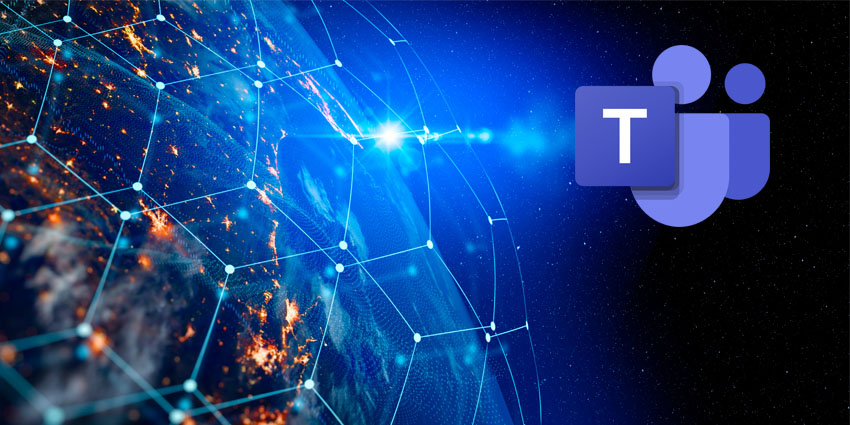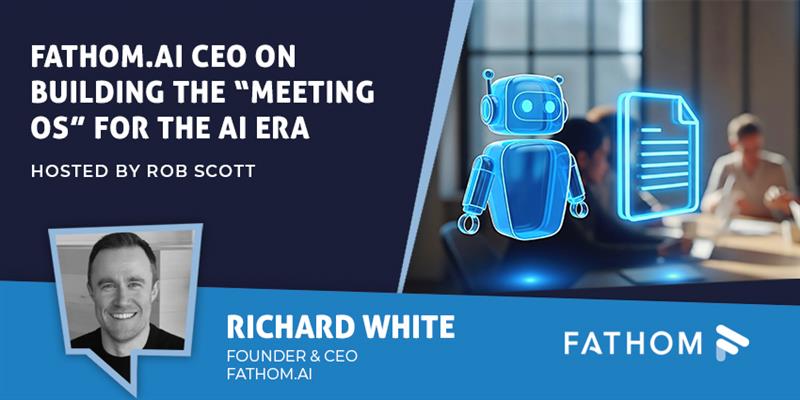Salesforce redefined Slack as an agentic AI operating system at last week’s Dreamforce 2025, reframing one of the quintessential chat and collaboration tools into a central hub for work, automation, project management, data, and AI agents.
This shift underscores a wider trend in how vendors are adapting to market demand. For years, enterprise buyers have called for single-pane-of-glass solutions that bring communications, collaboration, and work management together. The days of purely synchronous tools — the Zoom, Microsoft Teams, and Webex of the late 2010s — are giving way to platforms that blend asynchronous, synchronous, and AI-powered experiences.
Now, as the evolution of Slack, as well as others, notably Zoom, demonstrates, the future may belong to hybrid collaboration models powered by AI, workspaces that merge the best of asynchronous, synchronous, and agent-based intelligence.
Dreamforce 2025: Slack’s Big Reveal
At Dreamforce, Slack took centre stage. Salesforce introduced Agentforce 360, positioning the platform as the connective tissue linking humans, data, apps, and AI agents. Slack is no longer framed as a bolt-on app but as the “agentic OS” of the enterprise.
The product enhancements are extensive. Slackbot is being rebuilt as a personalised AI companion, capable of generating thread summaries, drafting messages, sending reminders, and providing deeper reasoning across workspaces.
Native AI agents are also arriving, including Agentforce Sales, IT Service, HR Service, Tableau Next, and a new Channel Expert agent, all embedded directly in Slack. Behind the scenes, a new Real-Time Search (RTS) API and Model Context Protocol (MCP) server now allow third-party AI agents to access conversational context securely.
Salesforce insists this isn’t a rebrand, but the activation of what Slack was always meant to be: the front door to enterprise work. The bet is bold that Slack is the workspace where AI agents live, operate, and assist, merging synchronous and asynchronous collaboration into a single environment where work actually happens.
Slack’s Evolution: From Messaging Hub to All-In-One Work OS
This shift is not incremental. It marks a redefinition of Slack from “chat + integrations” to a unified environment for conversation, execution, data, and intelligence.
Mel Brue, Vice President and Principal Analyst at Moor Insights & Strategy, affirms that this is a momentous evolution. “Slack is finally realising its original potential as a frontline workspace where teams can combine conversations, enterprise data, and AI automation in one place,” she told UC Today.
Slack is now equipped to serve as the ‘front door’ to the enterprise, and its unified environment for people, data, and agents positions it strongly for this role, especially as every major platform competes to offer that central experience.”
Indeed, by layering in AI, embedded apps, search, and agents, Slack aims to become the aforementioned “front door” of business operations, rather than just the meeting place around them. That’s the aspiration, and there are early signals this resonates.
“Year-to-date, our Buying Intent data shows Slack leading with 22 percent of all enterprise collaboration research activity, ahead of Microsoft Teams at 15 percent and Notion at 14 percent,” highlighted Tim Banting, Head of Research & Business Intelligence at Techtelligence. “Buyers no longer view Slack as just a chat app; it has become a workspace where people automate workflows, manage projects, and integrate business systems — the place where work truly happens.”
Techtelligence, part of Today Digital, offers data-driven insights for enterprise technology buyers. It tracks verified shifts in buying intent across UC, collaboration, and CX markets.
“Teams still dominates installed bases, but interest is levelling off,” Banting continued. “Slack, Notion, and ClickUp are gaining momentum as employees prefer platforms that combine communication with execution. While employees might meet in Teams, many now work asynchronously within collaboration tools like Slack.”
Craig Durr, Chief Analyst and Founder of The Collab Collective, positioned the move strategically: “(Slack CTO) Parker Harris’s vision of Slack as an ‘agentic OS’ marks a shift from messaging to intelligent workflow orchestration. By embedding AI and business logic directly into conversations, Slack positions itself as the operational layer of modern work and is directly challenging Microsoft Teams’ communication-centric model.”
In essence, Slack is entering territory that Microsoft and several other legacy UC players have avoided. But it must deliver practicality, scale, and adoption, not just vision.
Still, Slack faces structural headwinds. Zeus Kerravala, Principal Analyst and Founder of ZK Research, is less optimistic about its new identity. “Salesforce’s re-anointing of Slack as the ‘Agentic OS’ feels less like innovation and more like a last-ditch Hail Mary to justify a massive acquisition and pivot the narrative away from Microsoft’s incumbency,” he said.
Kerravala warned that unless Slack delivers beyond demo, it’s a risky bet against Microsoft’s established stack.
“For Salesforce customers, the ‘Agentic OS’ story introduces new complexity and a steeper price tag, and the success of this strategy hinges entirely on solving the as-yet-unsolved problem of at-scale, low-code agent orchestration,” he added.
Until they move beyond a demo environment, this is simply a very expensive bet that a better user experience can beat an entrenched, platform-wide default, and we know, particularly with Microsoft, that’s not the case.”
Async vs Sync: What This Signals for the Collaboration Market
Slack’s transformation is not happening in a vacuum. It coincides with a broader market shift in how work is getting done.
“The challenge now lies in behaviour, not technology,” Banting stressed.
(Buyer) intent for standalone business apps has dropped 28 percent year-to-date, indicating a preference for unified environments over multiple tabs. Slack’s open ecosystem supports this shift from ‘I work on my computer’ to ‘I work inside my workspace.'”
This suggests a potential, marginal decline in the dominance of real-time, synchronous tools. Platforms built around constant connection, Teams and Webex among them, remain essential, but increasingly they are not where work itself resides. Meanwhile, async-first platforms like Slack, Notion, and ClickUp are gaining momentum, especially for knowledge work.
“Microsoft’s Loop aims for a similar goal but remains hidden within Microsoft 365, a visibility issue in an overcrowded suite,” Banting said.
However, Kerravala asserted that this does Teams and Microsoft’s broader ecosystem a disservice, cautioning against ignoring “the gravitational pull of the Microsoft 365 bundle that governs millions of enterprises.”
Durr agreed that the competition is intensifying: “For Teams and its customers, this raises the bar on how deeply collaboration platforms must integrate AI to deliver real business impact. We can expect Microsoft to respond quickly. Its Copilot strategy already leans in this direction, using AI to surface context, automate routine work, and connect data across the Microsoft 365 ecosystem.
The real difference will be philosophical: Slack is betting on open agent ecosystems, while Microsoft is doubling down on Copilot as the connective tissue of its closed productivity stack.”
The lines between async and sync collaboration are indeed blurring. The next frontier, where both Slack and Zoom, in particular, are heading, is hybrid async/sync collaboration with embedded agentic intelligence. Users should be able to chat, automate, manage tasks, and instantly switch to synchronous collaboration within the same space.
Zoom’s evolution mirrors this trajectory. Once a video app, it now includes chat, whiteboarding, async document collaboration, and AI summarisation, to name just a handful. Like Slack, it’s moving toward a unified, agentic platform.
Brue’s framing of Slack as the “front door” explains why enterprises increasingly demand a single space to act, not just meet, while Techtelligence’s data underscores that shift toward unified, AI-driven workspaces rather than isolated async or sync tools.
If the future of enterprise collaboration is a battleground between AI-first work platforms, incumbents must evolve fast. Slack bets on openness and extendibility. Teams bets on scale and integration. The question is not who has the better vision but who can deliver it first.
The Agentic Hybrid Future
Enterprise collaboration now stands at a crossroads. By weaving AI agents, conversational interfaces, search, and embedded CRM logic into Slack, Salesforce aims to erase friction between work, data, and execution. But the journey is fraught with risk: entrenched competitors, complex orchestration, and buyer inertia all stand in the way.
The momentum behind async-first work is undeniable, yet pure async can lack immediacy and alignment. The likely winner will not be “sync or async,” but hybrid: agentic, contextual, and seamlessly fluid between conversation and action.
For C-Suite and IT leaders, the message is clear. The next-generation collaboration platform won’t be a chat or video app but an agentic workspace where people, processes, and intelligence converge.
Slack wants to be that workspace. Zoom is chasing. Microsoft will counter. The race to the agentic workspace has officially begun.







